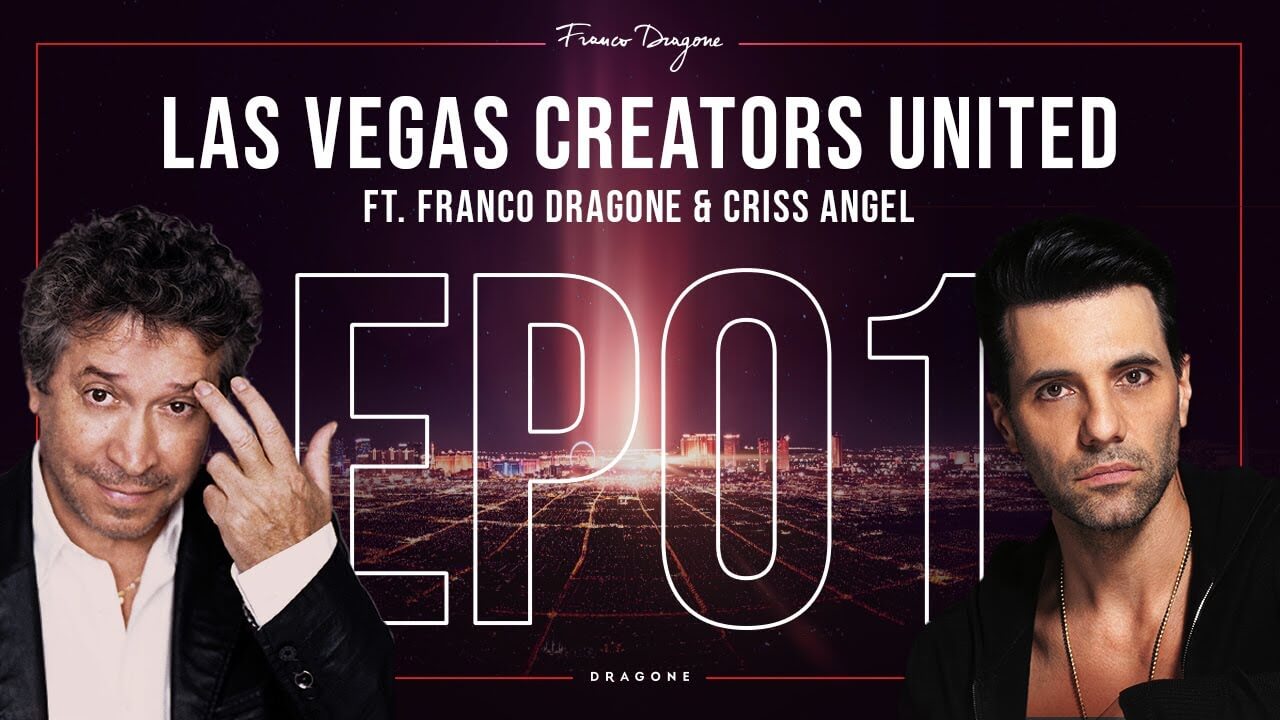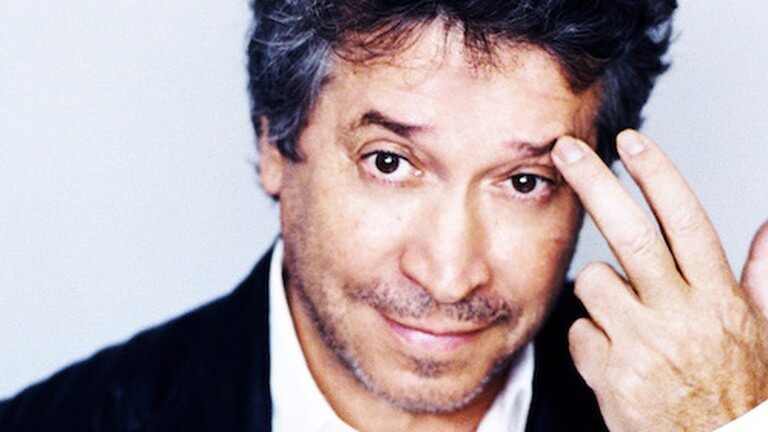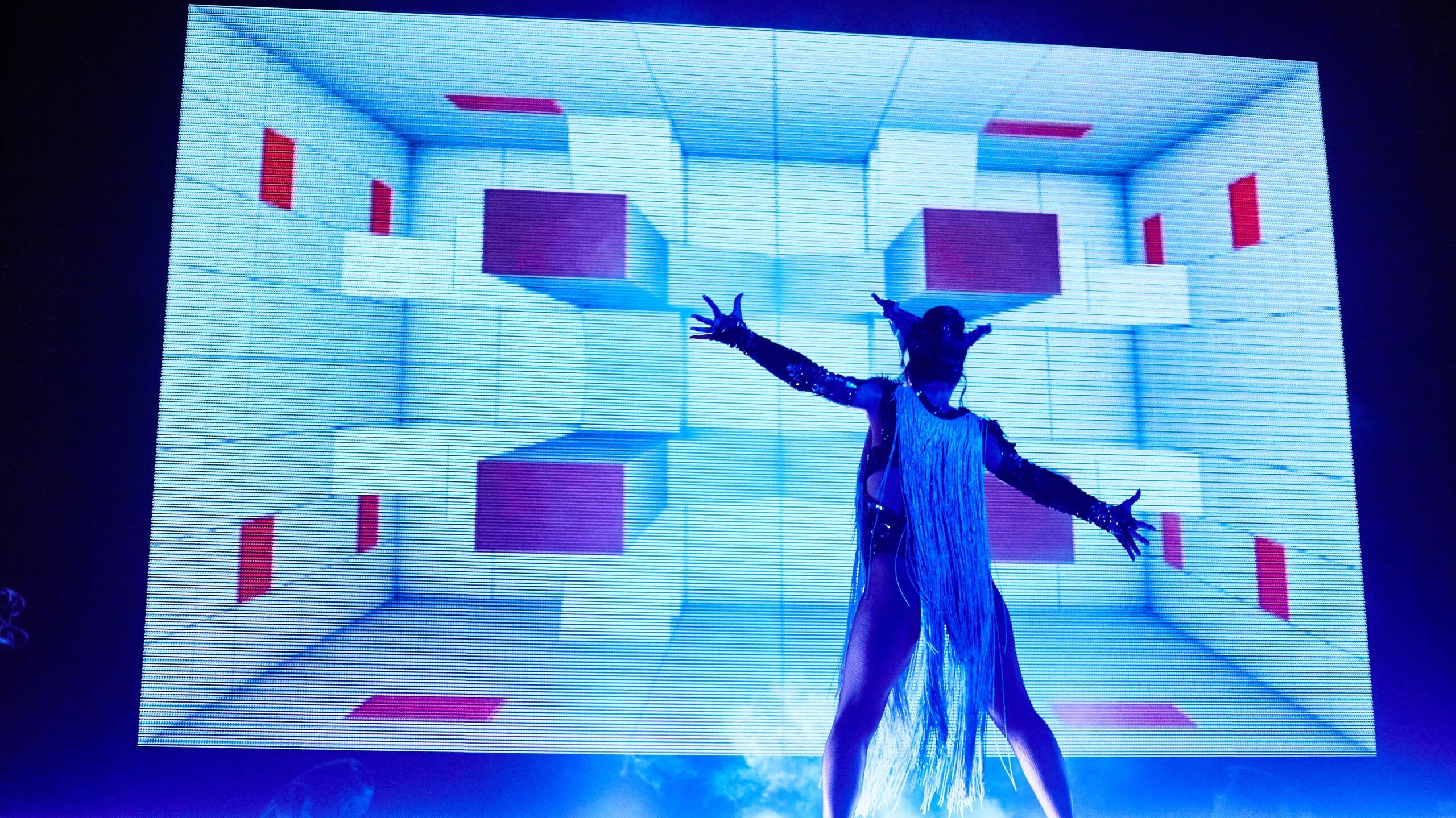
Category /
21.09.2020
Franco Dragone and how his Las Vegas shows have shaped his career
Las Vegas Creators United. As part of a new weekly web series launched to help raise money to support the Las Vegas entertainment community, in the first episode illusionist Criss Angel meets Franco Dragone, the world’s much-in-demand artistic director, who famously captured the hearts of international audiences.
In light of the ongoing coronavirus pandemic, it is no accident that the most celebrated and widely respected director Franco Dragone has gathered creative people from around the world who reflect shared values and are keen to shine a light on their work in Las Vegas.
“Las Vegas has changed my life. Even though I’m currently in Europe, I keep a wary eye on what’s going on over there,” Dragone says. “I can’t imagine myself to stand aside turning a blind eye or passively ignoring what is happening when our friends, hardworking entertainment professionals, are in need of help. Every morning I wake up determined to make a positive difference, change the world and help others. You can’t change the world alone, so I’m grateful to the people who have accepted my offer and amplify our work. Well, at least we try our own way and see what comes of it”.
You know Franco Dragone as an iconic director, creative genius who presided over the golden decades at Cirque du Soleil as Creative Director of a succession of hit shows such as Le Cirque Réinventé, Nouvelle Experience, Saltimbanco, Quidam, Mystère, Alegria and O that became worldwide successes. Later Las Vegas credits include Celine Dion’s show A New Day and Le Rêve. It only seems right to turn the focus onto another of his key periods of life: what inspired his career from the start.
I aim to boost people’s happiness levels and bring more joy to the world. Either way, it’s a great chance for people to forget that death is inevitable and for them to reach eternity
In contrast to his remarkable career in the world entertainment industry, Franco Dragone was born in a small village in southern Italy and at the age of six, his family moved to Belgium where he grew up. “I came from modest social backgrounds, my father was a worker. I couldn’t imagine myself going into theatre and performing arts or making any kind of living as an artist,” Dragone says. “However, even being a little child, I knew how to direct my abundance of energy to creative activities that occupied me and kept boredom at bay. I recall a time when I was six and my mum ran errands leaving me at home alone. When she came back, she found me building a train from our chairs”. Franco was an imaginative child and endlessly inventive in creating stories and images. Eventually, Franco made it into the college where he connected with a few teachers who dramatically changed his life. That’s when he burst onto the art scene and theatre became the central focus of his life.
Dragone continues: “I started doing acting unwittingly and then because they needed a director, I became a director. But it was always unconsciously: I was rather avoiding boredom and making my life a little bit better than it was. By doing so, I aim to boost people’s happiness levels and bring more joy to the world. Either way, it’s a great chance for people to forget that death is inevitable and for them to reach eternity”.
In Dragone’s career-defining role, perhaps one of the greatest adventures was the Montreal period, and Cirque du Soleil in particular, which made him a global icon. Here, Dragone delves into the past revealing his journey from amateur dramatics, teaching at a circus school to getting into the world of Cirque du Soleil. “I moved to Montreal, Quebec, on the spur of the moment. I knew there was a theatre company that was doing the same kind of productions as I did in Belgium – with amateur, non-professional actors. One day in 1985, Guy [Laliberte] asked me if I could direct a show for Cirque du Soleil. He got me hooked and I must say I agreed without the slightest hesitation. We started this journey as innocents and had no idea what it would become. Very soon I thought to myself – we’re starting a new important chapter in our lives,” Dragone recalls. They really shook things up in the world of circus art. “My friends in Montreal and Cirque du Soleil are still very precious to me. Today, when we look at the bold and audacious projects that are bringing a fresh approach to the entertainment industry, I can honestly say I owe everything to Guy, Gilles and Danielle. We created it together – from the little community in Quebec to an entire industry of its own – one of the biggest entertainment industries in the world with over 5000 employees.”
Las Vegas was a pivotal moment in Dragone’s career. He rhapsodies about what he saw in Las Vegas: “I vividly remember how my heart skipped a beat when I saw Siegfried & Roy show at the Mirage for the first time. I watched in awe, thinking I had never seen such magic, such a theatre, a production on such a scale: so grand yet sophisticated. It was a really interesting case of symbiosis between taste, sophistication, general allure and mainstream. This simple equation of two words – sophistication and mainstream – will forever remain a paradigm of the ideal concept.”
“When Steve Wynn brought me to downtown Las Vegas and started telling me exciting stories about Frank Sinatra I was spellbound by them. The little boy from a small Italian village inside me couldn’t believe his luck at being able to see all this magic and get closer to the various scenes I had seen on TV and had in my mind,” he says.
It was there, too, that they started working on Treasure Island – the time when Las Vegas was turning into an adult-oriented version of Disney. “When I started with Cirque in Montreal, I felt it was a crucial juncture in history, to say the least. When we had a privilege to work in Las Vegas I felt the same – we were part of something significant in human history.”
Imagine one lunch in which you come up with a great idea that becomes a smash hit. That happened with another spectacular phenomenon called Mystère. One day in 1993, Franco and Michelle [Crête], set designer, had a lunch meeting in a Greek restaurant in Las Vegas where the storyline was born, the whole concept and approach to the show was changed. There is something about Mystère, one of the most successful shows, that has inspired awe and fascination for 27 years. “One of the things I remember coming out of it was the idea of curtains flying away,” Dragone recalls. One key to the success of Mystère was its appeal to the language of emotions and images that have little to do with the words we use in daily life. “Whether you create a show, compose music or draw a picture, you can’t deny who you are: we are a sort of receiver affected by the world around us. Imagine a baby that is smiling, smiling, smiling and suddenly starts crying. I like such kind of emotion. When I worked at Cirque we didn’t use any dialogues. I tried to find something universal that goes beyond the verbal language, the language that touches people in a very mysterious way. I still believe that there is one universal language – images. It is a great way of communicating with an audience, it gives a spectator space for imagination, assigns a place to the human ability to create their own vision within the show. I don’t want to look or sound pretentious, but in my eyes, poetry also offers some space for readers to find their own vision, use their imagination and reflect on their lives,” he says.
There is almost a religious aspect prominently featured throughout all Dragone’s shows. “For me, a show is like a mirror ball. I use mirror balls almost in all my productions because it is my totem, ritual, happiness, shamanic talisman. Its surface consists of hundreds of facets with a mirrored surface. So, every spectator in the venue has one piece of this mirror ball that reflects his life. This is the way I try to talk to the audience wherever we stage the show.”
“On embarking upon a new show, we all start with a desire or intuition. In the modern world, there is fervent talk about the ways to achieve full awareness and meditation. In our case, we have a destination, but we cannot find words to explain it,” adds Dragone, still on a high after talking about his show O. “Something we had to be careful about is being blinded by the destination. Working on creation or tableau, you need to bring everybody along and not be afraid about reaching the destination. You need to force and guide the people, make them passionate and be able to deal with doubt and uncertainty.”
Celine Dion snapped up Dragone for her upcoming show A New Day which ran for five years at The Colosseum at Caesars Palace in Las Vegas and became one of the most successful residency shows of all time, attracting nearly three million people to 717 shows. It wasn’t long after Franco Dragone started working on his stage production Le Rêve in the Wynn Las Vegas casino resort. “When Le Rêve opened in Vegas in 2005, the audience wasn’t ready for something so avant-garde and audacious. I tried to break down boundaries in our relationships such as racism, homosexuality, xenophobia and gender. However, I still love this version though it was too dark and not playful enough for the time,” he reveals.
Even if something doesn’t work the way he expected, Franco Dragone always keeps his creative zeal alive. “The satisfaction you gain in creating a show provides you with energy for the next. I used to say I do a new show to solve the problems of the previous show, but it takes more than one lifetime. The most dangerous thing is when a show is successful as you stop working to make it better, whereas an unsuccessful one makes you work harder,” he says.
Dragone admits that when it comes to the final day of rehearsals and it’s time to open doors to the audience, he always feels a little sad: “Unfortunately, it’s not good to have me at a premiere because I’m usually sad, as the moment of inspiration and creation is behind me, but I put on a happy face which is maybe how life is. Life can be a creative and tragic comedy. The best days are the ones I call shake the stage where things work out differently and I feel inspired and creative as if given a gift by the Gods.”
Still, Franco Dragone has admirers all over the creative spectrum and no wonder there are hordes of those who try to copy his style and concepts. But how does he feel about it? “Ideas are something you can share with others for free. But what is important is how the idea is implemented in reality. It is upsetting and offensive to me that I get credited for an idea executed by others that is cheap, cheesy or not what I intended.”
Dragone tends to read and re-read writers he adores and, above all, The Empty Space by a legendary theatre-maker Peter Brook. What does he like most about this book? “The book teaches me to look at space not in the context of a theatre, but any space in which to tell a beautiful story. Just like a book or radio allow the person to visualize the story, so it is important that space allows the audience to imagine their own story,” he says.
Here, we turn our lens on the audience and how it has been changing over the decades. What is the audience like today in comparison with his first show in Vegas? “Certainly, over the last 15 years, technology has always been integrated into shows to improve the storytelling to the audience. However, as audiences, investors and producers are aware of trends on YouTube and in life, there may be an expectation to include the latest technological trends in shows. I feel it is important not to be trendy, as this is as short as a whispered word, better that the audience and the producers have a desire for a great vision. This allows me to innovate for the long term.”
Dragone admits: “I’ll never be able to give enough thanks to Guy, Gille, Daniel, Steve and all my friends, as they all have given me an opportunity to be an artist. I would be nothing without these people and that is not flattery,” he pauses, then adds: “Finally, in Italy at the end of Commedia dell’arte there are revealed only two characters – one welcomes the audience and the other that joins him and says, “Thank you, ladies and gentlemen, for having us tonight. We hope you enjoyed it and we wish you to come back again.” The point in our life is not to beg, but to share our talents with the world.”
Adapted and edited by Anna Khan from the first episode of the web series Las Vegas Creators United originally delivered as an online interview with Franco Dragone published on YouTube.
 EN
EN DE
DE UA
UA




